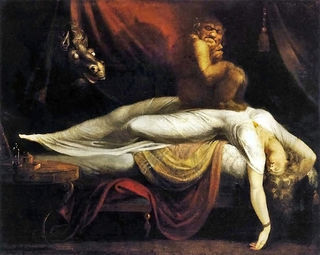Psychopathy
What Makes a Hero? And What Makes a Psychopath?
Fearlessness is important for heroes, but for psychopaths, not so much.
Posted December 20, 2017
In my previous post I discussed a study (Patton, Smith, & Lilienfeld) that examined whether psychopaths and heroes are “cut from the same cloth.” This was a study comparing personality traits and heroic behaviour in first responders (those who deal with emergency situations involving risk to themselves, such as police, military personnel, emergency medical technicians, and firefighters) and civilians (that is, people who do not work in such professions). To quickly summarise, the study found that first responders were higher in all psychopathic traits than civilians, and were also more likely to engage in “off-duty” heroism, that is, actions to help others that involved danger to themselves that were performed outside the course of their duties.
However, closer inspection of the data showed that among the so-called psychopathic traits, only those related to fearlessness/boldness were positively associated with heroic behaviour. Socially aversive psychopathic traits, such as meanness/cold-heartedness and disinhibition (recklessness), were actually associated with reduced likelihood to perform heroic acts, both in first responders and civilians. Additionally, a history of antisocial behaviour had a modest positive association with heroism, suggesting that antisocial and prosocial behaviour are not necessarily polar opposites.

The authors of the study argued that the results suggest that heroism and psychopathy are linked by a common core of boldness/fearlessness. However, the centrality and importance of boldness/fearlessness for understanding psychopathy have been seriously questioned. Hence, whether it is reasonable to talk about a link between heroism and psychopathy turns on how one understands the core components of the latter.
The concept of psychopathy was originally developed by Hervey Cleckley to help understand the personality makeup of certain kinds of criminals who presented a “mask of sanity.” That is, they superficially appeared to be well-adjusted, but behind this façade, they were actually severely disturbed and grossly impaired in many areas of life (Miller & Lynam, 2012). Cleckley developed a list of criteria for diagnosing psychopathy that has influenced subsequent understanding of the concept. One of his criteria was low anxiety, especially compared to other psychiatric patients, but not necessarily compared to the general population. However, this criterion has been somewhat controversial. Some current measures of psychopathy do not include low anxiety, whereas others, such as the triarchic model include it as a core feature.
Later, the concept of psychopathy was extended to the general population and considered as a spectrum of traits along which people can vary, rather than a category only applying to criminals. This has led to debate about how psychopathy might be related to normal personality, and whether psychopathy can be adaptive in some respects, rather than entirely pathological, and even whether there might be “successful” psychopaths. As noted earlier one model of psychopathy proposes that it comprises a combination of boldness, meanness, and disinhibition. However, there has been debate about the centrality and importance of boldness in understanding psychopathy.
Although various models of psychopathy have been developed, all of them agree that the common core of psychopathy is interpersonal antagonism (Miller, Lamkin, Maples-Keller, & Lynam, 2016). In terms of general personality, antagonism is most strongly related to low agreeableness. Antagonism is basically the same as meanness in the triarchic model, and meanness is very strongly correlated with low agreeableness. As well as antagonism, psychopathy is to a lesser extent generally thought to be related to high impulsivity, which is related to low conscientiousness, and disinhibition in the triarchic model. Interestingly, Robert Hare, a famous expert on psychopathy, thinks the difference between “successful psychopaths,” that is, those who avoid involvement with the legal system, and those who become criminals, is a lack of impulsivity in the former group (Lynam & Widiger, 2007). That is, “successful psychopaths” are higher in conscientiousness than the criminal type, although both groups are very low in agreeableness.
Measures of meanness and disinhibition tend to have moderate to large positive correlations (> .40), but tend to be more weakly related to boldness. Specifically, boldness tends to have a small positive correlation with meanness (~.20), but a smaller negative correlation with disinhibition (<.20). Previous research suggests that boldness is most strongly correlated with low neuroticism and high extraversion, to a lesser extent with high conscientiousness, and is only more weakly related to low agreeableness (Miller et al., 2016). That is, although meanness and disinhibition tend to hang together, boldness tends to stand more on its own, and is less obviously related to antagonism or impulsivity than the other traits.
Additionally, other research has found that both meanness and disinhibition have substantial correlations with deviant and antisocial behaviour, such as aggression/violence, and substance use, whereas boldness tends to have small or no correlations with these things (Miller & Lynam, 2012). Furthermore, measures of boldness or “fearless dominance” tend to be strongly associated with psychological health and adaptive outcomes generally, unlike the other triarchic traits.
Furthermore, a study on experts’ ratings casts doubt on how much boldness adds to understanding psychopathy (Miller et al., 2016). In this study, experts in clinical psychology were asked to rate fictional profiles of persons who were high on one or all of the triarchic traits. That is, three of the profiles depicted a person high in one each of boldness, meanness, and disinhibition, and one profile was high in all three. The experts were asked to rate how much each profile was likely to meet a typical diagnosis of a range of psychiatric disorders, including psychopathy. The profiles for meanness and the total profile (all three traits) had the highest ratings for symptoms of psychopathy (assessed as having “many” symptoms), followed by disinhibition (some symptoms), and then boldness (assessed as having few symptoms). Note that the total profile, was not rated as higher in symptoms of any diagnosis (e.g., antisocial personality disorder, narcissistic personality disorder, or other externalizing disorders) compared to the meanness profile. The authors pointed out that adding boldness to the profiles (i.e., in the total profile) did not produce ratings that were considered even more indicative of psychopathy and related disorders than including meanness alone. The authors argued that it is therefore unclear what advantages there are in considering boldness as a component of psychopathy as it does not appear to contribute to impairment and by itself is a marker of psychological health. Hence, in terms of the importance of the triarchic traits for psychopathy, it seems that meanness is most central, and disinhibition is also quite important, while boldness may be of questionable relevance.

The idea that psychopaths and heroes may be “twigs off the same branch” derives from the idea that they share a common characteristic of fearlessness. This idea is controversial though, because it is arguable whether fearlessness is important in understanding the core features of psychopathy.
On the one hand, the study by Patton et al. (2017) showed that first responders do tend to be high in all “psychopathic” traits, including boldness, and are more likely to engage in off-duty heroism than civilians. However, closer examination of their findings showed that antagonistic traits, such as meanness and disinhibition reduce the likelihood of engaging in heroic behaviour, which is unsurprising given the self-centred nature of these characteristics.
On the other hand, their findings, along with previous research (Smith, Lilienfeld, Coffey, & Dabbs, 2013) found that people with a history of antisocial behaviour are more likely to engage in heroism as well. This seems puzzling, but I would suggest that this may be because people may engage in antisocial behaviour for a wide range of reasons, some of which are related to having antagonistic personality traits (i.e., more classic psychopathic traits) and some of which might have to do with other tendencies that may be less inherently selfish but can still get people into trouble. Hence, it may well be the case that some people who do “bad” things might also be more likely to do “good” things when there is a common element of personal danger. This may be related to an underlying fearlessness and even an enjoyment of danger (related to sensation-seeking, as I have discussed elsewhere.) However, considering that fearlessness may not be of core importance to psychopathy yet is clearly important to heroism, it may be quite misleading to suggest that psychopaths and heroes are “cut from the same cloth.”
Image Credit
Darth Vader image from BagoGames at Flickr (reproduced under Creative Commons Licence)
References
Lynam, D. R., & Widiger, T. A. (2007). Using a General Model of Personality to Identify the Basic Elements of Psychopathy. Journal of Personality Disorders, 21(2), 160-178. doi:10.1521/pedi.2007.21.2.160
Miller, J. D., Lamkin, J., Maples-Keller, J. L., & Lynam, D. R. (2016). Viewing the Triarchic Model of Psychopathy Through General Personality and Expert-Based Lenses. Personality Disorders: Theory, Research, & Treatment, 7(3), 247-258.
Miller, J. D., & Lynam, D. R. (2012). An examination of the Psychopathic Personality Inventory's nomological network: A meta-analytic review. Personality Disorders: Theory, Research, and Treatment, 3(3), 305-326. doi:10.1037/a0024567
Patton, C. L., Smith, S. F., & Lilienfeld, S. O. (2017). Psychopathy and Heroism in First Responders: Traits Cut From the Same Cloth? Personality Disorders: Theory, Research, & Treatment.
Smith, S. F., Lilienfeld, S. O., Coffey, K., & Dabbs, J. M. (2013). Are psychopaths and heroes twigs off the same branch? Evidence from college, community, and presidential samples. Journal of Research in Personality, 47(5), 634-646. doi:http://dx.doi.org/10.1016/j.jrp.2013.05.006




